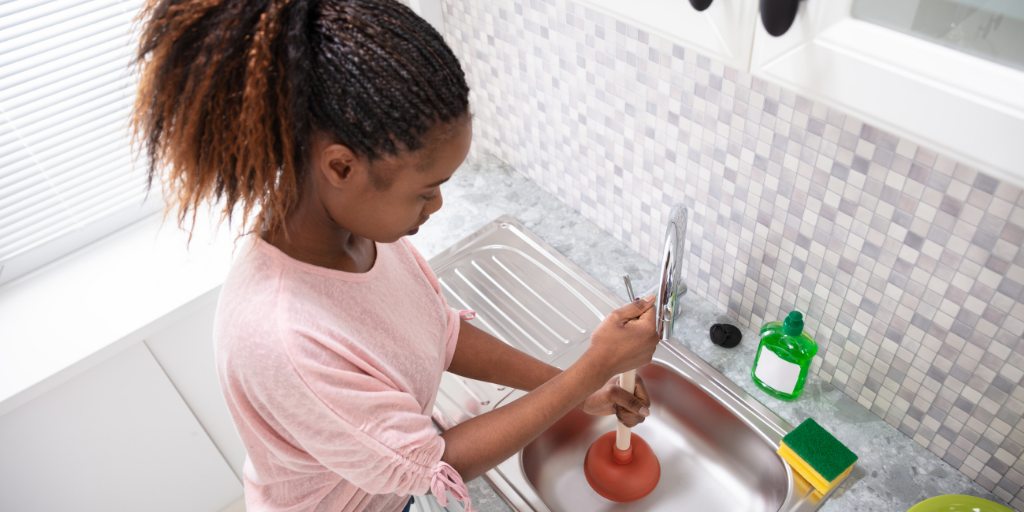- How-To Guides
Step-by-step guide to unblocking a blocked sink
Please note, we can only give you basic advice on this page to do the job yourself. Make sure you use the right tools and protective equipment to avoid hurting yourself or damaging your home. Always consult a professional for more complex repairs.

Simply follow these easy steps and ensure you have all the correct tools to get started.
Tools you’ll need:
Old sheets/towels
Plunger
Detergent
Flexible wire/draining rod
Clean and dry the overflow and surrounding area. Block off the overflow with tape, ensuring it’s airtight. Make sure your plug hole is open.
If the basin’s full of water, use a bucket to empty it and pour in enough warm water to cover the head of your plunger.
Pour a generous amount of detergent into the basin. This will sink through the water to the blockage and help loosen it.
Position the plunger so it creates a vacuum around the plug hole. Once there’s a seal, gently but firmly push downwards and up again for around 20 seconds. This forces water against the blockage and pushes it along the pipe.
If the water drains from the basin, add more warm water and keep using the plunger until you’re happy that the blockage has cleared.
If the plunger isn’t working, try using a flexible wire or a draining rod. You can use this to manually push the blockage out of the way. Once you’re sure it’s clear, run your taps to make sure the problem is solved
If you don’t have a plunger to hand
Alka-Selzer tablets are good for mild blockages and bad smells; simply pop a couple down the plughole and then pour in a cup of vinegar. Wait a few minutes and blast with hot water to flush the blockage through.
Bleach can break down some types of clogs but won’t be able to clear a blockage caused by hair. The above methods are move effective and more environmentally friendly.
Looking to save money on insurance? From boiler and heating protection to plumbing and drainage, and appliance cover, we’ve got a plan to suit every need and budget. Get a free quote online in just minutes and see how much you could save. Or find out more about how protection against unexpected events can help you keep life running smoothly.
